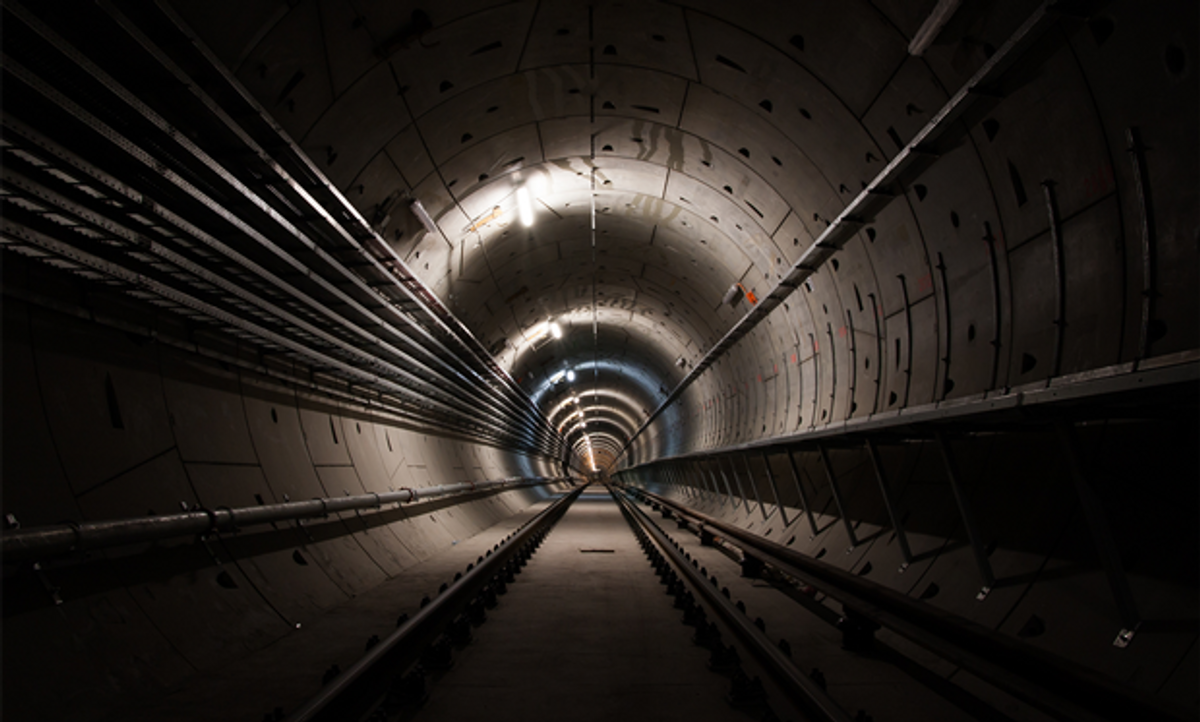Underneath London’s bustling streets lie several kilometers of 2.5-meter-wide concrete tunnels lined with power distribution cables that can reach blistering temperatures. To cool the tunnels, vertical shafts spaced out every kilometer or two supply fresh air and eject hot air out into the open.
Researchers at London South Bank University (LSBU) want to put that waste heat to use. A typical 1.8-km tunnel stretch between ventilation shafts produces 400 kilowatts of heat, enough to heat 100 homes or a small commercial office, they have found in a preliminary analysis done with the city’s electricity network operator UK Power Networks.
This heat recovery scheme would have a third of the carbon emissions of a gas boiler delivering the same amount of heat. The researchers presented this work at the International Congress of Refrigeration in August.
“It’s very difficult to identify exactly how many cable tunnels there are in the world,” says Graeme Maidment, an LBSU professor of air conditioning and refrigeration engineering who led the work. But cable tunnels lie below most major cities. Several tunnels are now under construction in London, and the UK likely has tunnels spanning several hundred kilometers, he says.
Renewable sources of electricity have gained immense traction in light of the climate crisis. But building heat in the UK and many other countries still relies on dirty gas-fired boilers. To meet Britain’s carbon emission reduction targets, the UK government has passed a ban on gas boilers in new construction starting in 2025. This has prompted a hunt for alternative low-carbon heating sources.
Tapping into waste heat is a “double whammy” Maidment says. “If you transfer heat from the place you want to cool to space you want to warm, you can do both for the cost of one, can do so very efficiently, and save lots of carbon.”
There are many untapped energy sources in cities that could provide heat year-round and close to users, says Gareth Davies, a research fellow at LSBU. The list includes transformers, sewers, data centers, and underground railway tunnels. According to The Greater London Authority, there is enough heat wasted in London to meet the entire city's heating demand. The recently unveiled Bunhill 2 scheme, slated to start at the end of this year, will channel heat from the London Underground to warm more than 1,300 homes in North London.
But capturing heat from underground cable tunnels provides an extra-strong business case, Maidment says. Not only could the power distribution company sell the waste heat, but “cooling the cables reduces their resistance so you can put more juice through them.”
And there’s no fancy equipment needed, just a simple HVAC fan coil unit that transfers heat from the air to water circulating in coils that can then be piped to a heat pump. In their analysis, the research team placed the fan coil unit either at an air supply shaft at the head of a 1.8-km cable tunnel stretch or an exhaust shaft at the end of it. Their calculations were for June through November, when the tunnels get hottest and for which tunnel temperature data was available. In the summer, the heat could be used for hot water, swimming pools or greenhouses, but “the scheme would be even more beneficial in the winter when demand for heat is higher,” says LSBU senior research fellow Akos Revesz.
A heat exchanger installed at the supply shaft reduced cable and tunnel air temperatures by 8 degrees Celsius, but the amount of heat recovered varied from about 100 kilowatts in colder months to 460 kW in high heat. Installed at the exhaust shaft, the system produced around 400 kW during all six months.
“We now need to take this from a desk study to some practical demonstrations,” Maidment says. “There are lots of high voltage cables so there is safety and risk that needs to be considered.” But, he points out, “what we’re proposing doesn’t necessarily need a large cable tunnel. It could be any power cable running in the ground and you could put a pipe next to it to absorb heat.”
Prachi Patel is a freelance journalist based in Pittsburgh. She writes about energy, biotechnology, materials science, nanotechnology, and computing.



